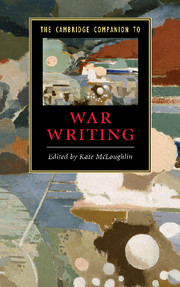5 - War in print journalism
from Part I - Themes
Published online by Cambridge University Press: 28 January 2010
Summary
Until the nineteenth century, British and American newspapers obtained accounts of battles from participants or chance observers. One of the earliest instances of a war report in the American press, “French and Indians Murder Settlers on Virginia Frontier,” appeared in the Pennsylvania Gazette (proprietor: Benjamin Franklin) on July 5, 1753:
New York, July 2 . . .
By a Gentleman who came Passenger in Captain Kiersted, who arrived here last Friday, in 9 Days from Topsail Inlet, in North-Carolina, we learn that the Day before he sailed from thence, they had Advice there, that an Express was arrived at Charles-Town, in South-Carolina, from Virginia, with an Account, that a large Body of French and Indians, amounting to between 7 and 800, were arrived on their back Settlements, and had murdered all the Inhabitants of an out Village in the Province of Virginia, except a Girl of about 10 Years old, who fled into the Wood, and by that Means escaped the Cruelty of these Merciless Savages.
The hallmarks of print war journalism are present even in this simple synopsis. A dateline (“New York, July 2”) is provided to set the place and time from which the news derives; partisanship is not eschewed (“murdered,” “cruelty,” “merciless savages”); and the survival of a little girl provides a human interest element. Above all, care is taken to establish as precisely as possible the source and age of the data. The “news,” when it reaches the reader, is some two weeks old, but what is significant is the effort made to render the links in the chain of information exchange as strong as possible. Though what is published is at least third-hand hearsay, the underlying principle is that the credibility of an account is in direct proportion to the news-gatherer's proximity to events.
- Type
- Chapter
- Information
- The Cambridge Companion to War Writing , pp. 47 - 58Publisher: Cambridge University PressPrint publication year: 2009
- 1
- Cited by

